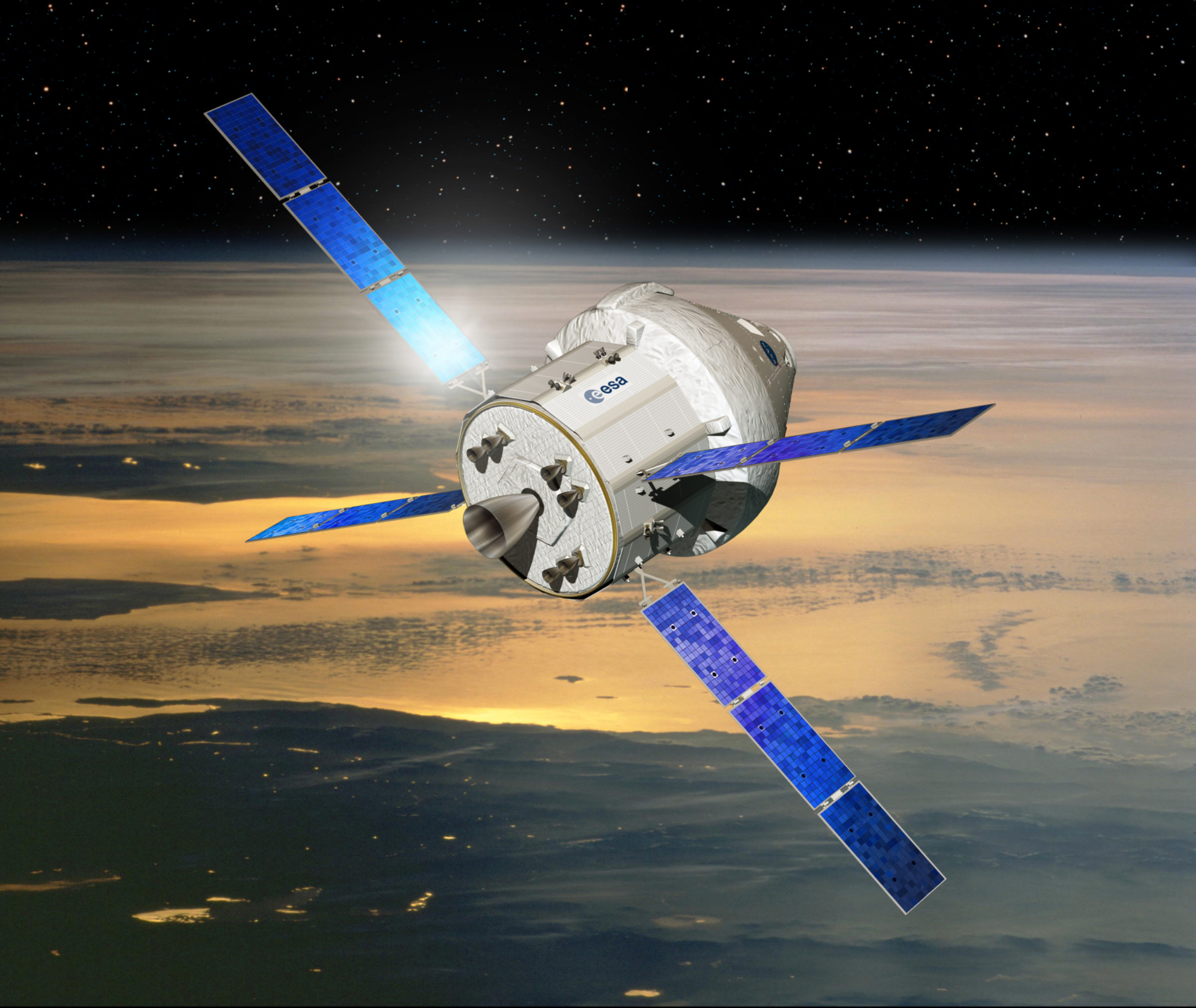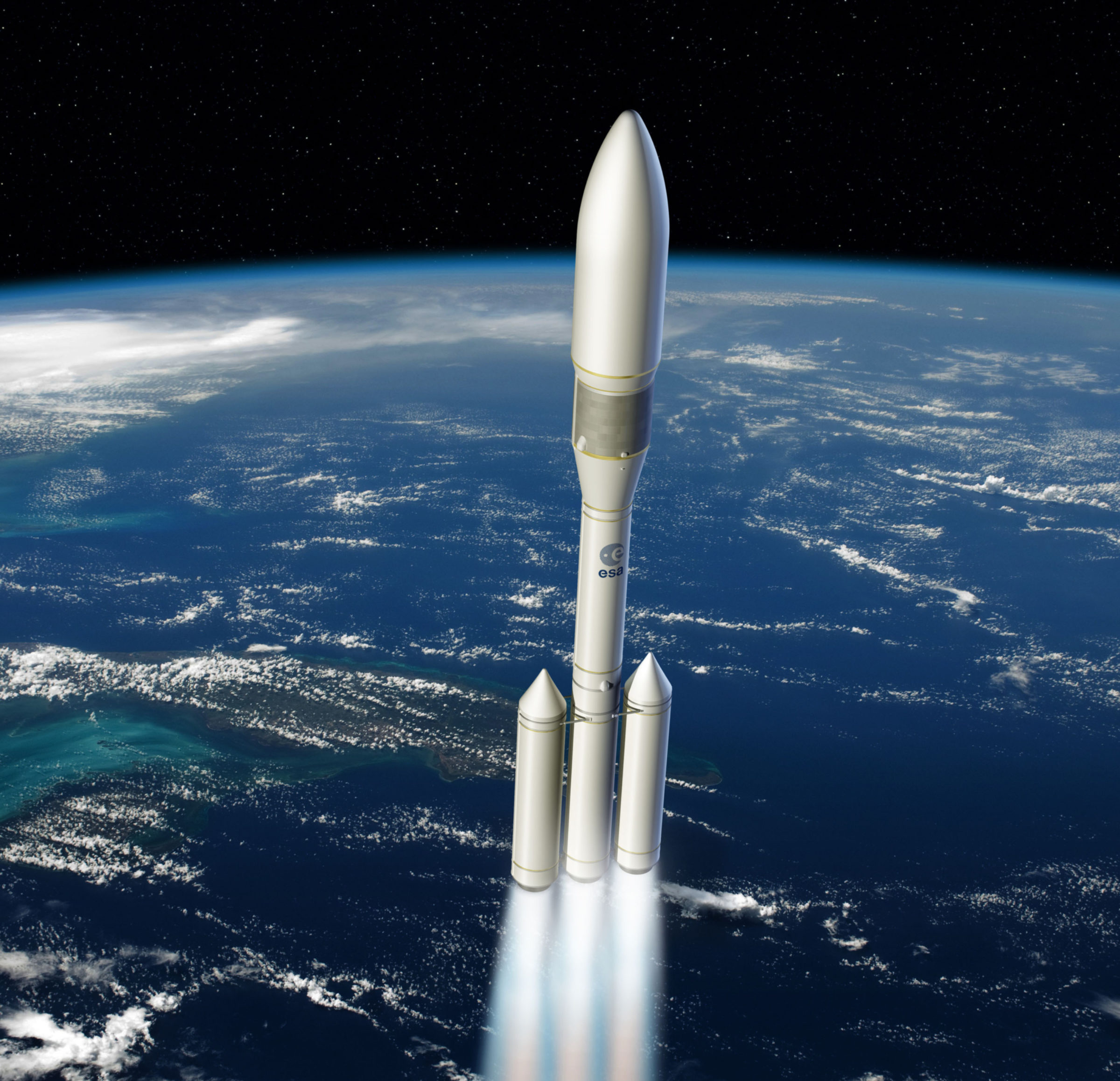Jason Davis • Nov 26, 2012
Orion service module, Ariane development highlight new ESA budget
Representatives from the European Space Agency’s 20 member states and Canada approved a 10 billion euro budget (13 billion U.S. dollars) for 2013-2017 during their Ministerial Council last week in Naples, Italy. Unlike NASA, the ESA sets its budget levels for multiple years at a time, requiring mandatory member participation in some programs and optional contributions to others. Budget highlights include Ariane rocket development, a variety of planetary and Earth science missions, and the development of a service module for NASA’s Orion crew capsule.
The Orion module will be part of a trade to offset some of the ESA’s required International Space Station contributions. The United Kingdom, which rarely opens its wallet for human spaceflight, is chipping in 20 million euros for the project. As the BBC’s Jonathan Amos reports, the UK hopes the investment will bolster its technology sector, and ensures the country will play a role in NASA’s efforts to send humans beyond Earth orbit for the first time since 1972.
The service module will be based on the ESA’s Automated Transfer Vehicle, which regularly ferries supplies to the ISS. It will debut on Exploration Mission 1 in 2017, an uncrewed trip around the moon that begins with the inaugural flight of the Space Launch System. This will be the second test of the Orion capsule, which is scheduled to be launched by a Delta IV Heavy in 2014 during Exploration Flight Test 1.

The ATV is equipped with thrusters to make course corrections and boost the International Space Station’s altitude, but it currently lacks the large engine bell seen in the ESA’s concept art. A bigger engine will be required to slow Orion down for lunar orbit, as well as propel it home towards Earth.
ATV care packages are launched to the ISS via the Ariane 5, Europe’s primary launch vehicle. The ESA budget includes funding for a new Ariane 5 upper stage that will eventually be used in the Ariane 6. The 6 is expected to have lower production costs and is slated to be ready for flight in 2021.

ESA member states also green-lit Russia’s involvement in ExoMars, a set of Mars missions scheduled for 2016 and 2018. When NASA cancelled support for the project earlier this year, the program was thrown into disarray and nearly cancelled. Russian involvement revives the missions, which involve an orbiter, stationary lander and rover.
During the 2013-2017 budget cycle, the ESA will launch three planetary and astronomy spacecraft:
- Gaia, a star-mapping satellite that will create the most detailed, 3D map of the Milky Way to date. Scheduled launch: 2013.
- LISA Pathfinder, a technology demonstration precursor for LISA, a joint NASA/ESA mission to study gravitational waves and the fabric of spacetime. Scheduled launch: 2014.
- BepiColombo, a Mercury orbiter. Scheduled launch: 2015.
Development will also continue on three future planetary, astronomy and solar science missions:
- Solar Orbiter, which will fly within 0.28 AU of the Sun to study the solar heliosphere. Scheduled launch: 2017.
- Euclid, a dark energy investigation mission. Scheduled launch: 2019.
- Juice, the Jupiter Icy Moon Explorer. Scheduled launch: 2022.
The ESA will also continue to invest in a host of Earth observation programs (a PDF explaining the various programs can be found here):
- Earth Observation Envelope Program (EOEP) 4, which manages a fleet of Earth-observing satellites, including the recently-lost Envisat spacecraft.
- MetOp Second Generation, a suite of polar-orbiting meteorological satellites.
- Global Monitoring for Environment and Security Space Component (GMES SC) 3, which includes the Sentinel-5, an atmospheric monitoring satellite, and the Jason sea level monitoring satellites.
Let’s Go Beyond The Horizon
Every success in space exploration is the result of the community of space enthusiasts, like you, who believe it is important. You can help usher in the next great era of space exploration with your gift today.
Donate Today

 Explore Worlds
Explore Worlds Find Life
Find Life Defend Earth
Defend Earth

